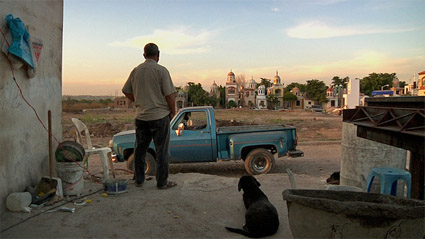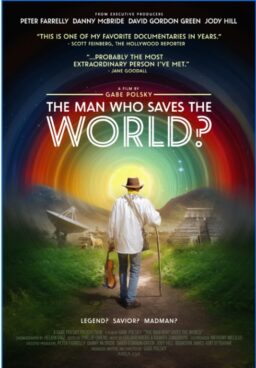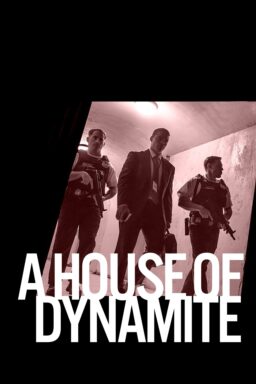Here is a collection of a dozen of the best documentaries I saw in 2012. It’s not a “best of the year” list. Just some good memories of these films.
I will not burden you again with another complaint about lists. More than ever, I despise them because they shift focus away from a film and toward a list. When I recently caught up with “Django Unchained,” for example, I gave it four stars. The comments section was overrun with readers asking if that meant it was now on my Top Ten list. One reader insisted on knowing which title it replaced. Although the piece was some 2,000 words long, another reader insisted he still wanted to see “my official review.”
All I can do with any film is tell you that I’ve seen it, and what I thought about it. If it sounds interesting to you, it might be worth seeking out. I really don’t care if it’s third or fifth on a list. Nor does it bother me that I’ll be writing about 13 docs, instead of the “official” ten. Frankly, my dear, I don’t give a damn. Not all of these even got four stars. (Stars are also a nuisance, of course.) Nor are these all necessarily great films. I was happy to see them. Now I share them in alphabetical order. That’s all.

“The American Scream,” by Michael Stephenson, considers three men who live not far apart in Fairhaven, Masachusetts, and every year turn their homes into haunted houses at Halloween. They aren’t members of a club. I’m not sure if they even know one another. They don’t seem particularly macabre or doom-ridden. But at Halloween, on their lawns, corpses rise from graves, skeletons dance, dead victims hang from wrecked cars, ghosts float and eerie music haunts the air. In some cases, there are “tours” with scary blasts of air and grotesque faces popping out of the dark.
All three families have cluttered home workshops in which they make ghastly masks, animated props and yawning graves. They also haunt, if that is the word, local garage sales. What looks like a shabby old sofa to you may look like to these guys like it belongs in a creepy Victorian parlor.
Some of these are year-around projects; the homeowners tour garage sales looking for props. One man’s job has been outsourced and he invests his severance pay in creating a year-around Ghoulie Manor, thinking he could charge admission and replace the lost income. As the wife of one man observes: “It gives him something to do.”

“Brooklyn Castle.” A documentary about Brooklyn’s inner-city Intermediate School 318, whose chess team became the first middle school team in history win the United States Chess Federation’s national high school championship. Chess is an unforgiving sport: You either win, lose or draw. There is no such thing as luck. It’s an exercise in pure logic. During the two years covered in Katie Dellamaggiore’s documentary, one team member, Rochelle Ballantyn, approaches her dream of becoming the first female African-American grandmaster in U.S history.
During the same two years, the team is under a constant threat of losing its budget in state financial cutbacks. Yes, because such programs are always the first on the list when legislators look for ways to cut the budget. Eliminate the school paper, not the football team. You know how it goes.
“Brooklyn Castle” faces the same challenge as other recent docs about Scrabble. There’s no cinematic way to show the progress of a chess game. Shots of the board are boring. But you can photograph eyes and smiles, and the pride on parents’ faces. And Rochelle’s glow as she’s presented with the title of master, and the four-year college scholarship awarded by the same tournament.

“Central Park Five” The term “wilding” first appeared in 1989 when five black and Latino teenagers were arrested and convicted for the brutal assault and rape of a 28-year-old white woman while she was jogging in Central Park. She lingered near death in a coma for days before finally beginning to recover. The press bought into the police narrative, that gangs of young non-whites were prowling the city, attacking random victims for their entertainment.
Although the term remains a durable meme, what we may have forgotten, or never have known, is that the convictions of the five defendants were overturned by an appeals court after they had served 10 years behind bars. A man named Matias Reyes, already jailed as the East Side Rapist, confessed to a cellmate and was linked to the case by DNA evidence. A carefully constructed chronology established that the “wolf pack” was elsewhere in Central Park at the time — but too far away to have possibly been involved.
Yet all of the Central Park Five were recorded on video making full and detailed confessions to the crime. How could this be? This documentary by the respected Ken Burns, his daughter Sarah and her husband David McMahon suggests the confessions were browbeaten out of them after hours of nonstop questioning. Although they mentioned specific details of the assault, those seem to have been suggested to them by the police.
Although the Central Park Five are suing the city for wrongful arrest and conviction, the city hasn’t settled. Meanwhile, the word “wilding” remains in our memories. When I used it earlier, did you remember the case? Did you remember the “wolf pack” was wrongfully accused?

“El Velador.” Natalia Almads’s film presents in stark, unexpected detail the extent and power of drug cartels. It involves an exclusive, fast-crowing cemetery favored by Mexico’s drug millionaires. It’s the best address in Hades. The film centers on the routine of its night watchman, or el velador.
We follow this taciturn middle-aged man, whose name is never given. He arrives at dusk every day in a beat-up old truck and settles into the watchman’s shack. Thrown together out of discarded building materials, the shack is surrounded by crypts of two or three stories tall, which are topped by domes, floored with polished marble, decorated by statuary and invariably displaying photographs of their occupants — some holding automatic weapons.
There is no narration and next to no spoken dialogue in the documentary, although from the watchman’s old TV set, we hear items on the news about the daily body count between drug dealers and police, drug dealers and the army, and drug dealers with one another. There is some excitement when the “boss of bosses” is shot down, but we understand there will immediately be a new boss of bosses.
In the daytime, marching bands accompany coffins to their resting places. Mourners are joined by spectators, even tourists. Vendors sell chilled mangoes and soft drinks. We see a widow who comes every day to wash and clean her husband’s two-story crypt, while her children play hopscotch on the flat grave markers on the less prosperous side of the street. What else is to be said? The watchman has a single naked light bulb, which he hangs above his door in the evening and moves inside at night. He sleeps under a couple of blankets on a plank supported by oil drums. The only prosperous ones here are the dead.

“Fake It So Real.” About a group of down-and-out heroes, a group of semi-pro wrestlers in Lincolnton, N.C. On Saturday nights, they rent a hall, construct their own ring, set out the folding chairs, stage a wrestling show, take the ring apart, truck it away and start talking about next week. For this labor, one of them jokes, they get “20 bucks, a hot dog and a pat on the ass.”
There are 12 or 14 wrestlers, and together they comprise the entire Millennium Wrestling Federation, which seems to feature a title bout for its World Championship every few weeks. They have physical and relationship problems, most of them seem unemployed or in low-paying jobs, but for one shining night of the week they are stars. They have onstage personas, design their own flashy costumes, and play out scenarios of grudges, ferocity and bad-ass moves. One says he knew he’d made it when three little girls asked him for his autograph.
Robert Greene’s film peers at the bottom rung of show biz. These guys play music from their own collections. They use Radio Shack brand strobe lights. One “villain” wears a dime-store Halloween mask. Admission is $5 (kids are free), and at the weekly show, the crowd may be loyal and loud, but it’s small. The rent for their venue, which looks like a school auditorium, is $240, and that would take 48 tickets to cover it. There must not be a lot left over. The possibility exists that they’re wrestling at a net loss to themselves. But they love it. That’s why the film is so easy to care about.

“Head Games.” A harrowing doc on a subject that most American sports fans simply do not want to think about. We enjoy such sports as football, hockey and soccer, and don’t want to think about the possibility that they may well be causing irreversible brain damage to the players. Such sports, played in high school and even grade school, send some children into adulthood with permanent injuries.
The problem is head concussions. Few players avoid them. How many concussions are too many? “One,” says a neurologist in the film. Especially if it’s your child. Contact sports will, however, continue to be played, and players will continue to be concussed, some more than once in a season or even once in a game. “No child under the age of 13 should be allowed to play collision sports,” says an expert here.
Steve James’ documentary is a calm survey of the problem. It establishes that sports are such a central part of our culture that we seem willing to risk the well-being of our children in order to allow them to play.
James moves on from a high school team in the Chicago area to injuries among pro NFL players. They are nearly 20 times more likely to develop Alzheimer’s disease than the general population. There is a chilling scene showing Ann McKee, professor of neurology and pathology at Boston University, slicing through the brains of dead NFL veterans and pointing to the dark places associated with the brain disease CTE (chronic traumatic encephalopathy). There is a painful moment when an NFL veteran finds himself unable to name the months of the year.

“How to Survive a Plague.” The two years before the discovery in 1996 of a more effective AIDS-fighting drug combination were, a survivor recalls, “a dark time.” Nothing seemed to be working. After the disease was first identified in 1981, there were a few moments of hope, like the drug AZT, which showed good results for a month and then stopped working. AIDS activists in Act-Up and other groups pressed for more urgent testing of promising drugs, but none seemed to be successful and some even caused blindness, as the disease continued its relentless and invariably fatal spread.
It was a dreadful time. Politicians did not want to be associated with the disease. Hospitals resisted admitting victims, and when an AIDS victim died some of them placed the body in a black garbage bag. Funeral homes refused to accept them. “How to Survive a Plague” follows the drama with the immediacy of the video shot at the time, and some of its most fascinating scenes involve scientists from drug companies such as Merck explaining the slow growth of knowledge about the nature of the disease.
David France’s documentary focuses on the grass-roots crowd sourcing by the AIDS community itself to find weapons against the disease. Faced with the indifference of politicians and the maddening molasses of bureaucracy, activists organized to gather information, suggest changes, coordinate advances.
The film spotlights scientists, researchers and a retired chemist, not all of them HIV-positive, who did invaluable work in calling attention to a treatment protocol and promising drugs from around the world. Surprisingly, as they won seats on boards overseeing the crisis, one federal official observed: “They know more than we do.”

“Into the Abyss: A Tale of Death, A Tale of Life“ This may be the saddest film Werner Herzog has ever made. It regards a group of miserable lives, and in finding a few faint glimmers of hope only underlines the sadness.
The documentary centers on two young men in prison. Michael Perry is on Death Row in Huntsville, Texas, America’s most productive assembly line for executions, and on the day Herzog spoke with him had eight days to live. Jason Burkett, his accomplice in the stupid murders of three people, is serving a 40-year sentence. They killed because they wanted to drive a friend’s red Camaro.
Herzog opposes the death penalty, which America and Japan are the only developed nations still imposing. But the film isn’t a polemic. Herzog became curious about the case, took a small crew to Huntsville and Conroe, Texas, where the murders took place, and spoke to the killers, members of their families and those of their victims. He obtains interviews of startling honesty and impact. I’ve learned that he met his subjects only once, on the day of the interviews, and the film presents their first conversations. I’ve long felt Herzog’s personality is compelling and penetrating, and in evidence I could offer this film about Texans who are so different from the German director. He draws replies from them I will not soon forget.

“Jiro Dreams of Sushi.” Jiro Ono is 85 years old. As a young boy, he ran away from home to become an apprentice in a restaurant and has been making sushi for more than 70 years. He is apparently not happy doing anything else and prefers to work all day, seven days a week, every day in the year. If an enforced holiday comes along, he considers that lost time.
His restaurant serves only sushi. It has 10 seats at a counter. It is in the basement of a Tokyo high-rise, not far from a subway stop. It has been awarded three stars, the highest possible rating, by the Michelin Guide. David Gelb’s “Jiro Dreams of Sushi” is a documentary about a man whose relationship with sushi wavers between love and madness. He is a perfectionist, never satisfied, and if you go to work for him as an apprentice, you will have to spend weeks learning how to squeeze out a towel properly before moving on to learn how to slice a hard-boiled egg.
This is madness, of a sort. It is also the quest for perfection. Even at the high prices of Jiro’s premium fresh ingredients, you realize he must be a rich man. But to what end? The existence of his sons are an indication that he has a wife, although we never see her. He must have a home, although we never visit it. There must be hours when he cannot be at work, but the film indicates no amusements, hobbies or pastimes. The idea of his courtship of his wife fascinates me: Forgive me, but I imagine that even while making love, he must be fretting about the loss of valuable sushi-making time.


“Paradise Lost 3” and “West of Memphis.” Both films bring the saga of the West Memphis Three closer to completion. They were the three teen-agers who were convicted of the rape and murder of three little boys in Robin Hood Hills, Arkansas. Quickly profiled by local prosecutors as members of a Satanic cult and victims of heavy metal music, they were accepted by their community as ideal candidates for their crimes, and spent 17 years in jail–one of them on Death Row–before being set free after 17 years in jail.
The “Paradise Lost 3” continues a heroic filmmaking journey by Joe Berlinger and Bruce Sinofsky to tell the story and line up the evidence indicating the three defendants couldn’t possibly be guilty. During the course of their odyssey they brought forward various other likely guilty parties, some of whom seemed almost begging to be charged. “West of Memphis,” by Amy Berg, recaps the saga for a HBO documentary. It’s difficult to watch these films and decide for yourself who is guilty. Only one thing is obvious: The West Memphis Three are innocent.

“Queen of Versailles.” We met Jackie and David Siegel, a couple in the process of building themselves the largest private home in America. Their new home in Florida has 10 kitchens and a bowling alley. I never learned how many rooms it has, but while it’s under construction, Jackie gives a tour to Lauren Greenfield, the film’s director — and when Greenfield asks, “Will this be your bedroom?” Jackie says, “Oh, no … this is my closet.”
These people come from another world. When the Siegels fall on hard times, Jackie, forced to rent a car, asks the man behind the counter, “What’s the name of my driver?” David, meanwhile, retreats into a sort of man cave, his study with its big-screen TV, where he watches the financial news, telephones bankers and investors.
Siegel is a billionaire who founded Westgate Resorts, “the largest time-share company on the planet,” I believe he says. Jackie is his third wife, and although she is clearly a trophy and has the boobs to prove it, she is also the mother of seven of his eight children, was born into humble circumstances, refused to become somebody’s secretary and earned an engineering degree instead.
You can’t hate these people, and it’s clear that director Lauren Greenfield doesn’t. What you can do is deplore them. It’s a shame they haven’t thought of more productive and useful ways to spend their fortune. Still, to be sure, their fortune is based on income from time-share buyers who had the same problem.

“Searching for Sugar Man.” Do some stories exist only because we need for them to? “Searching for Sugar Man” is about a gifted singer-songwriter from Detroit who was an enigma. His face half-hidden by long flowing hair and dark glasses, he sang in folk music bars with his back turned to the audience. His name was Sixto Rodriguez.
He was so good that without fame or a large fan base, he signed a two-album contract with Sussex and A&R Records. The first album, “Cold Fact,” got a rare four-star review from Billboard. Neither it nor the second one, “Coming From Reality,” sold well, the contract was dropped, and the story seemed to end there.
Nothing else was heard from Sixto Rodriguez. But several years later, his albums traveled half the world away, to Cape Town, South Africa, where bootleg copies passed from hand to hand and his songs became anthems of the anti-apartheid movement. When an indie record store owner named Stephen Segerman released them commercially, they took off, the first selling 500,000 copies, which in that nation would be comparable to the Beatles or Elvis Presley.
This doc by Malik Bendjelloul follows the whole in reliable arc of his life, showing Rodriguez not only as a gifted musician but as a wise and serene man. Not concerned by money or success, he wins our hearts simply by being exactly who he seems to be.

“They Call It Myanmar: Lifting the Curtain.” This is the much-discussed new documentary about the sealed-off nation of Burma. The film could also have been titled, “The British Renamed it Burma.” Under any name, it is a beautiful nation, sharing borders with Thailand, China, Bangladesh and India.
Here is a nation that has undergone much hardship after winning independence from Britain in 1948. It was controlled until 2011 by a military dictatorship. It is currently in the process of democratic elections, and recently its famed Nobel Peace Prize winner, Daw Aung San Suu Kyi, apparently won a seat in Parliament.
This film that was shot secretly by Cornell professor Robert H. Lieberman during two visits there arranged by the U.S. Department of State. Made unofficially and on a shoestring, is nevertheless a thing of beauty; its cinematography, music and contemplative words make it not an angry documentary but more a hymn to a land that has grown out of the oldest cultures in Asia.
This entry draws from my original reviews.












